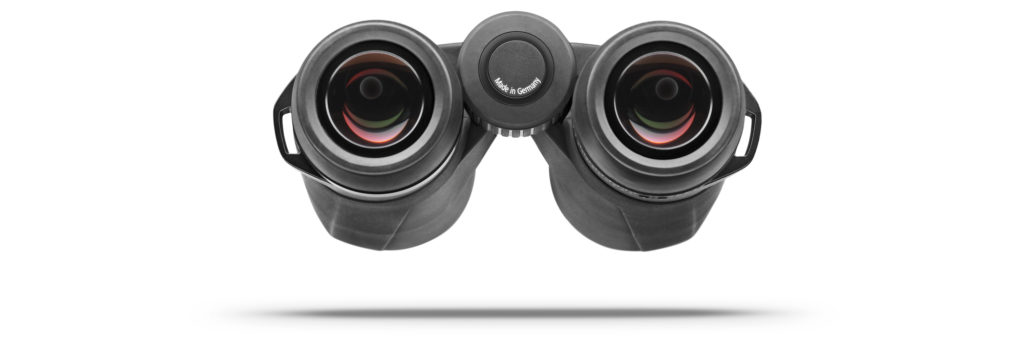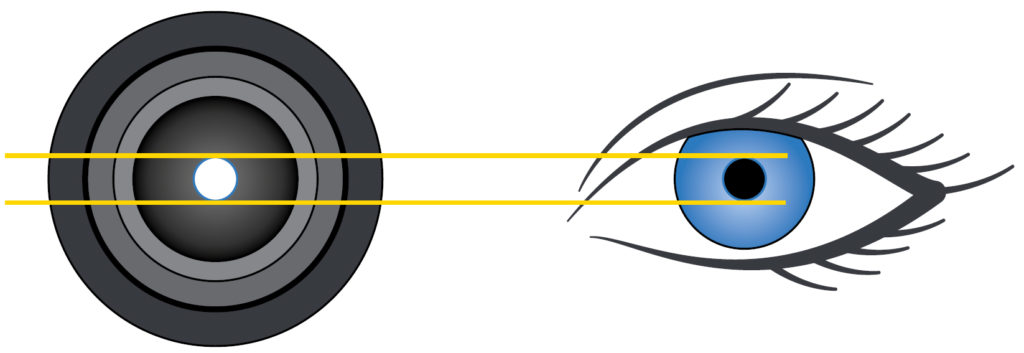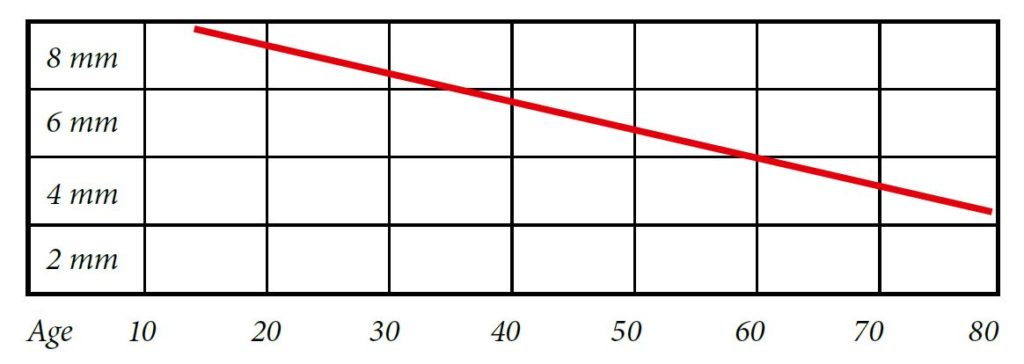Part 3: Exit pupil
In addition to the lens aperture, the magnification plays a key role in image brightness. The larger the image on the retina, i.e. the larger the area on which available light is distributed the darker the image.

The key factor is the exit pupil which takes these two effects into consideration. It creates the “window” or the “light exit opening” from which light exits the binoculars or riflescope. The larger it is the more light that can reach the eye and, therefore, the brighter the image.
Definition
The diameter of this exit pupil is calculated on the basis of the following influencing parameters:

8 x 56 binoculars includes an exit pupil with a diameter of 7 mm, 10 x 30 binoculars 3 mm only. If you reach out your arm and hold the binoculars against a light surface and look at the eyepiece, you can clearly see the exit pupils. These are absolutely round with crisp edges and evenly bright on high-quality binoculars.
Effect of the pupil of the eye
The exit pupil can be interpreted as the diameter of the luminous flux that exits the binoculars. The eye also plays a vital part in the perceivable image brightness: the part of the luminous flux that enters the eye contributes to x image brightness only. If the user’s pupil is only open 2 to 3 mm during the day, the 7 mm exit pupil of 8 x 56 binoculars cannot be fully utilized. The image through an 8 x 56 model is then no brighter than through 3 x 10 binoculars with a 3 mm exit pupil – assuming all other quality features are identical.

Influence on brightness
The exit pupil remains the decisive factor in suitability for use at dawn. In this case, the exit pupil on binoculars should be as large as possible but no less than 4 mm. If the exit pupil is larger than the pupil of the eye, the theoretical brightness of the binoculars is not fully utilized but the eye still has a certain amount of flexibility. Despite shaking hands or binoculars not placed exactly in front of the eyes, you still remain “in the picture” literally. The maximum aperture of the eye pupil largely depends on age. The pupils of children can open up to more than 8 mm, while they seldom exceeds 4 mm in old age.

Excellent for fast target acquisition
Furthermore, a large and reliable exit pupil is particularly important for fast target acquisition using a riflescope. Typical driven hunt scopes with low magnification provide exit pupils up to 15 mm. Here the brightness of the image is not important but those large “windows” are crucial for fast, reliable aiming. With variable scopes, the exit pupil at low magnification often does not achieve value possible mathematically. The larger the zoom range the higher the number of compromises. These conditions apply to all brands but due to the importance particularly on driven hunts, hunters can be sure that they have an optimal solution with ZEISS riflescopes.